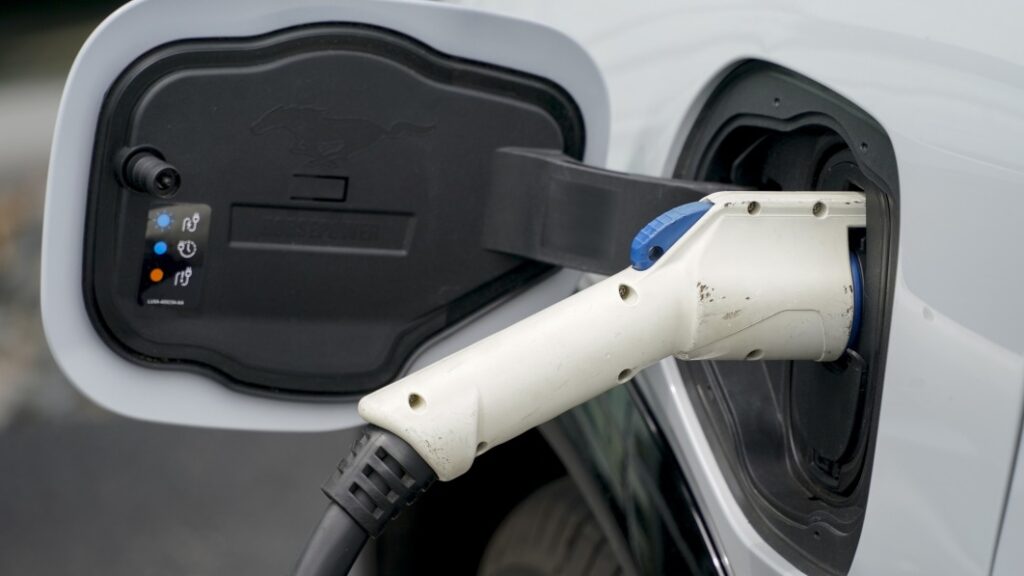Treasury lets automakers do the math on EV tax credit eligibility

Auto executives the world over marked their calendars for March 30, the deadline the US Treasury Department set for itself to hammer out requirements electric vehicles would have to meet for federal tax credits. The day ended up being rather anticlimactic.
What many people anticipated was highly significant minutiae and fine print solidifying a key portion of President Biden’s sweeping climate bill, the Inflation Reduction Act. Section 30D of the law determines whether US consumers get as much as $7,500 tax credits when they buy a fully electric or plug-in hybrid vehicle.
Specifically, the law says vehicles can qualify for the full incentive if at least half of battery components are made in North America, and if 40% of the value of raw materials in the battery are extracted from or processed domestically, or in countries the US has free-trade agreements with.
Treasury was expected to make tough calls on thorny issues, like how to calculate the value of a battery component, or what constitutes a foreign entity of concern — government speak for US geopolitical adversaries.
Instead, the government stayed light on details and heavy on talking points: the number of eligible EVs would go down in the short term, but grow in the long term as more domestic production comes online. And indeed, the number of models eligible for credits has been whittled down to about 20 nameplates listed on the government’s website. Roughly half of those only qualify for a $3,750 credit.
How is this happening when the fine print still isn’t settled? The answer tells you a lot about the Treasury’s strategy on these issues, and how the sausage gets made in Washington.
As I’ve written before here, the Biden administration is working at cross purposes in how it implements the IRA. It wants to speed up EV adoption to fight climate change and reduce car companies’ dependence on Chinese products. Pretty much any auto or battery manufacturing executive will tell you the US can’t quit China cold turkey.
Rather than make calls now picking one priority over the other, Treasury bought itself more time by punting the ball back to industry. The guidance officials published on April 17 wasn’t much different from the white paper they put out in December. The administration kept the language vague to give automakers flexibility in determining their own compliance, said Manish Dua, a senior analyst at Benchmark Mineral Intelligence. “The government has tried to be more accommodative,” he said.
In short, car companies are doing their own math for now, and they’ll come back to Treasury between now and June with more comments on how they think this should work. The list of eligible vehicles makes for interesting shorthand on how much of your EV or hybrid truly is made in America.
This era of self-determination won’t last forever, and it doesn’t necessarily mean Treasury is going soft on China. This month’s guidance acknowledged the need for “transition rules” to “provide manufacturers time to develop the necessary capability to certify compliance’’ on critical minerals. They more or less get to self-certify compliance this year and next. In 2025, Treasury will tighten the rope.
One of the crucial questions still pending is what constitutes a foreign entity of concern. This will determine just how much China is carved out of America’s EV supply chain by saying, for example, whether offtake from a Chinese lithium joint venture in Australia can count toward a tax credit or not.
Treasury has outsourced this question to the Energy Department, which has been gathering data from the auto industry on battery costs for years. In other words, they’re no rube.
Some observers have pointed to the Commerce Department’s action on FEOC language for semiconductors as a hint that officials will take a hawkish approach. Treasury Secretary Janet Yellen’s comments this week on the primacy of national security over economic costs vis a vis China certainly point in that direction. It probably will be months before we see where they land.
In the meantime, car companies are ramping up their leasing business to take advantage of the truck-size loophole in the IRA for commercial vehicles, which allows them to sidestep all of these requirements.
Still, not everyone wants to lease a car. Section 30D will still be a powerful tool influencing EV and battery investment.







